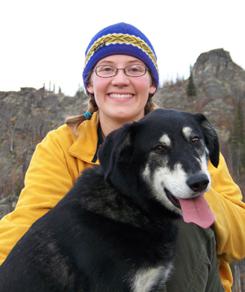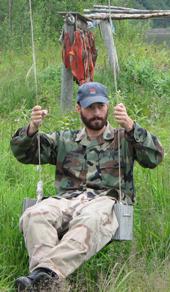2007 & 2008
2008: Hayley Lanier
Refugium or crossroads? Alpine biogeography in the Wrangell-St. Elias region

Hayley’s dissertation research focuses on the evolutionary history of the collared pika, an alpine mammal that has been present in eastern Beringia since the Pleistocene.» These small, herbivorous, alpine mammals can be found on talus slopes of Alaska and northwest Canada.»
Using genetic techniques, Hayley is addressing questions related to the evolutionary origin of collared pikas, the timing of their past population expansion, and the landscape-level factors that partition within-species genetic variation.» Preliminary genetic data from pikas suggests that there may have been more than one alpine refugium in eastern Beringia during the Pleistocene. The Hopkins fellowship allowed her to specifically address the biogeographic importance of one of these areas, the Wrangell-St. Elias region.
This study has important implications for understanding the persistence of lineages in the Beringian refugium. The demographic history of pikas may also be important for assessing the effects of future climate change. Pikas are considered to be bellwethers of climate change, and they may be indicative of the overall health of alpine communities.» As alpine specialists, their range will contract upslope with shifts in treeline and temperature, further isolating populations.
2007: Stephen Winslow
Expansion of an archaeological tool: building regional chronologies of spruce tree growth on the Kuskokwim River, Alaska

Steve is building master and regional spruce tree-ring chronologies along the Kuskokwim River flood plain for his Master's research. Ultimately, these riparian tree-ring chronologies will help reconstruct historic environmental conditions as well as allow for future cross-dating of wooden remains from western Alaskan archeological sites.
Steve is also studying current and historic human use of driftwood in the region in an attempt to model driftwood availability versus use on the Kuskokwim river.
Financial support from the Hopkins Fellowship helped fund travel to the Kuskokwim River to extend tree-ring coverage along the river, sample driftwood disks and to collect additional information related to driftwood transport and its use by people.


